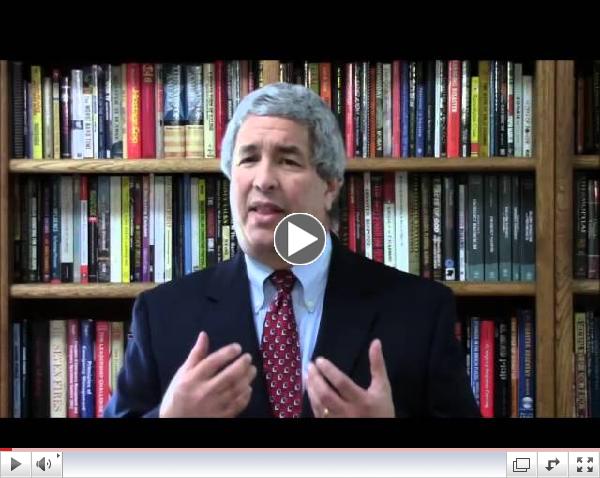|
Exploring Emergency Management & Homeland Security
|

Using PPOST to Address Incident Priorities
by Timothy (Tim) Riecker
In incident management we talk a lot about objectives, strategies, and tactics. Objectives being an identification of what needs to be accomplished; strategies outlining our approaches in how to achieve any given objective; and tactics providing the details of who, what, when, and where along with specific applications to support a specific strategy. With most responses being reasonably routine, many experienced responders go from objectives to tactics in the snap of a synapse. This is based on experience, training, standards, and lessons learned that are so practiced and ingrained in what we do, it's practically an automatic response. But what of more complex incidents which challenge us with anything but the routine?
An extraordinary response often requires us to step back, take a breath, and think things through. The challenges are complex and necessitate that we approach things with deliberate procedure, and certainly documenting our outcomes, if not our entire thought process. While the formula of objectives, strategies, and tactics still inherently works, some are understandably so overwhelmed with what they face, that even developing objectives can seem to be too much in the weeds at the onset. For the solution, I turn to my northern neighbors - Canada.
While I'm not sure who to actually credit with the PPOST acronym, I know it's most commonly cited in incident management practices, plans, and training in Canada. PPOST stands for:
- Priorities
- Problems
- Objectives
- Strategies
- Tactics
Using PPOST in your approach can better help you to focus on what needs to be done. We know from ICS training and other courses that our immediate incident management priorities are:
- Life safety
- Incident stabilization
- Property conservation
____________________________________________
© 2020 -
Timothy Riecker, CEDP
Tim Reicker is a founding member, partner and principal consultant with Emergency Preparedness Solutions, LLC, a private consulting firm serving government, businesses, and not for profit organizations in various aspects of emergency and disaster preparedness.
|
|
Bernstein Crisis Management
|
 Allostatic Load from Coronavirus - A Hidden but Real Threat to Crisis Management
Allostatic Load from Coronavirus - A Hidden but Real Threat to Crisis Management
by Erik Bernstein
(This month's article is written by Johnathan Bernstein, Erik's father.)
We all know that the novel coronavirus is affecting most of us negatively on a personal and professional level. It's harder to focus, easy tasks seem more difficult, we tire easily.
Psychologists call this "allostatic load" and it's not only a personal threat, it's a threat at the workplace.
Consider this. Is a worker suffering (possibly undiagnosed), from coronavirus-related allostatic shock more or less likely to:
- Make errors, including those that could lead to further crises?
- Be able to function effectively during a breaking crisis (that will continue to occur regardless of COVID-19's impact)?
- Be productive?
- Have interpersonal issues at work?
- Engage in theft that would help with financial losses resulting directly or indirectly from the virus?
- Commit acts of discrimination or harassment?
- Avoid coming to work if there were recently diagnosed cases there, even if it wasn't someone who worked with them in close proximity?
- Criticize the company's COVID-19 response privately and/or publicly?
In general, have all his/her worst character defects "on display?"
We have examined the level of threat increase for organizations in multiple industries and found that 50-75% of the crises to which they would routinely be vulnerable are more likely to happen in the days, weeks and months ahead, even as the world does its best to put a lid on the virus' spread.
This is yet another reason why your head of HR needs to have a permanent position on your Crisis Management Team. Every employee is a public relations representative for your organization whether you want them to be or not. Crisis prevention, reputation management, STARTS at the employee level.
It's also a reason why you should have a system in place that allows employees to seek emotional and other needed help at this uniquely stressful point in history, a system that also allows your colleagues to report mistakes and wrongdoing, intentional or not, "up the chain" for the record or anonymously. All while examining the types of risks bullet-pointed above and others that might be more specific to your individual organization and brainstorming how you can prevent or at least mitigate damage from those potential crises.
All of your stakeholders, internal and external, will benefit from a higher level of attention to this growing threat and you can easily distinguish yourself from your competition by how you manage this process. Knowledge alone is useless. Knowledge + Action = Solution.
______________________________________________
Erik Bernstein is Vice President of Bernstein Crisis Management, a specialized firm dedicated to providing holistic strategies for managing crisis situations.
|
|
|
| The March of the Bonus Army |
This excellent PBS documentary traces the origin and impact of the march of thousands of World War I veterans on Washington DC in the summer of 1932. Among the lessons are how bad decisions can exacerbate a volatile situation and turn an expectation of violence into a self-fulfilling prophecy. It is an example of both the importance of right of assembly and the consequences of ignoring that right. |
The following are excerpts from my blog
Canton on Emergency Management. Please visit my blog to see the rest of my articles.
Social media is often pilloried as a source of misinformation and fear. But it can also offer tools to bring people together in these times of social distancing.
|
|

Welcome to the May edition of E
mergency Management Solutions
.
These past few weeks have seen a rise in civil protests, many involving armed demonstrators, against continuing shelter in place restrictions and, most recently, in response to the death of a suspect in police custody. To add to our problems, we now need to plan for civil unrest, hence my review of the lessons from the Bonus Army in 1932. The key lesson is that a sympathetic approach can relieve tensions while poor assumptions can lead to violence.
This month, Tim Riecker shares some timely ideas of how to develop plans during a complex crisis and Johnathan Bernstein discusses the mental health side of the COVID pandemic that could affect employee effectiveness. My own article suggests some things you may want to consider when planning your EOC staffing.
Be well!
|
|
_
________________________________________________
Staffing Your EOC
Five Important Considerations
_________________________________________________
In reviewing emergency plans and programs, I've note that while every plan includes provision for an emergency operations center, few plans demonstrate any real thought behind EOC staffing. The assumption appears to be that EOC staffing will mirror the organizational structure described in the plan. While this may be true for some organizations, for most it is an unrealistic assumption.
There are several reasons for this. The organization chart included in many plans represents an ideal. It describes relationships and responsibilities rather than actual staffing. Full staffing of all the positions described in these organizational charts would most likely exceed available personnel resources.
To develop efficient EOC staffing levels, we need to consider several key factors that can affect EOC operations. The following are some of the questions I ask in helping clients develop EOC staffing levels.
______________________________
_______________________
________
If you are having trouble viewing my featured article, try clicking on the link at the top of the page. You can always find my articles in the white paper section of my blog site, Canton on Emergency Management.
|
|
Resources
FEMA Issues "Disaster Financial Management Guide"
FEMA has released the
Disaster Financial Management Guide to support jurisdictions in establishing and implementing sound disaster financial management practices.
The guide identifies the capabilities and activities necessary to prepare and successfully implement disaster financial management while maintaining fiscal responsibility throughout response and recovery operations. This includes considerations and practices necessary to track, calculate and justify the costs of an emergency; support local reimbursement reconciliation; avoid de-obligation of grant funding; and effectively fund and implement recovery projects and priorities. The principles, concepts and resources contained in the guide can support jurisdictions in identifying the resources needed to support their community, increase the efficiency of recovery efforts, and reduce the likelihood of audits and financial penalties for the jurisdiction.
The guide also presents an overview of common disaster assistance and recovery funding programs that may be beneficial to recovery efforts. Although there are many government and private/non-profit sector recovery resources and programs designed to aid jurisdictions, navigating the various eligibility requirements and application processes pose administrative challenges for jurisdictions.
The "Disaster Financial Management Guide" takes an all-hazard approach and addresses a broad range of issues jurisdictions face. However, the document contains concepts, principles and resources that are applicable to the current operational environment and ongoing COVID-19 response and recovery efforts.
GAO Report
This report examines the extent to which: (1) FEMA's
National Preparedness System and associated preparedness grants
have assisted jurisdictions in preparing for disasters; (2) FEMA
has strengthened the National Preparedness System and what
steps remain; and (3) FEMA is using after-action reports to identify
lessons learned and strengthen future preparedness.
GAO is making four recommendations that FEMA (1) determine what steps are needed to address emergency management
capability gaps, and communicate it to key stakeholders (2) prioritize completion of after-action reviews, 3) track corrective actions, and (4) develop guidance on sharing findings externally. The Department of Homeland Security concurred and FEMA is taking actions in response
___________________________________
Professional Development Opportunities
June 1-4, 2020
Virtual Workshop
The 2020 symposium theme is "Imagination, Improvisation, and Innovation in Emergency Management Education."
Since 1975, the Natural Hazards Center has hosted the Annual Natural Hazards Research and Applications Workshop in Colorado. Today the Workshop brings together federal, state, and local mitigation and emergency management officials and planning professionals; representatives of nonprofit, private sector, and humanitarian organizations; hazards and disaster researchers; and others dedicated to alleviating the impacts of disasters.
Nov. 13-18, 2020
Long Beach, California
The goal of the IAEM Annual Conference is to improve knowledge, competency level and collaborative skills. IAEM accomplishes this by attracting relevant high-profile speakers to address current topics and practical solutions.
|
|
The Bonus Army: An American Epic
Bonus Army: An American Epic
By Paul Dickson and Thomas B. Allen
Shortly after World War I, American veterans were promised a bonus that roughly doubled their pay. However, the costs was such that Congress delayed payment until 1945.
At the height of the Great Depression, there was considerable pressure both from the veterans and a sympathetic Congress to pay the bonus immediately. In the summer of 1932, several thousand veterans descended on Washington DC to lobby Congress for passage of legislation to pay the bonus. However, fears that the protest might turn violent and fearing Communist infiltration, President Hoover and Army Chief of Staff Douglas MacArthur ordered the military to disperse the Bonus Army using cavalry, tanks, and tear gas.
While this book may not appear related to emergency management, the increasing protests over COVID 19 protective measures suggest that it is prudent to prepare for potential civil unrest. This book holds many lessons worth noting, such as the tolerant approach used by the DC police force that helped prevent violence, the misinformation and elite panic that led to the decision to use the military, and how politics and public opinion can lead to questionable decisions. There are also lessons about the logistics behind mass care, transportation, and volunteer organizations.

______________________________________
|
Emergency Management: Concepts and Strategies for Effective Programs
Second Edition
by Lucien G. Canton
This book looks at the larger context within which emergency management response occurs, and stresses the development of a program to address a wide range of issues. Not limited to traditional emergency response to natural disasters, it addresses a conceptual model capable of integrating multiple disciplines and dealing with unexpected emergencies.
|
|
Need a speaker for your next conference? I offer keynotes, seminars and workshops.
 |
|
Three Reasons Why I'm the Right Speaker for Your Conference
|
|
|
Speaking Engagements
Conference cancelled? Consider a virtual conference or a webinar!
|
|
| |
|